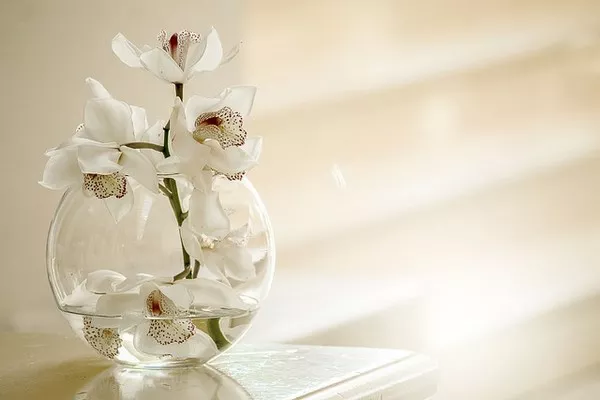Flowers, with their delicate petals and vibrant hues, capture the essence of nature’s beauty. Preserving their ephemeral charm through the art of pressing is a timeless practice that allows us to extend their life and admire their grace even beyond their natural bloom. Whether for sentimental keepsakes, artistic projects, or scientific documentation, pressing flowers is a skill that marries the wonder of botany with the elegance of artistry. In this comprehensive guide, we delve into the intricacies of this age-old technique, unveiling the steps, tips, and creative possibilities that await those who embark on this journey of preserving nature’s finest offerings.
Introduction to Flower Pressing: A Time-Honored Craft
Flower pressing, also known as botanical pressing, is an ancient practice that dates back centuries. Cultures around the world have embraced this art form for various purposes, from scientific documentation in the field of botany to creating intricate botanical artwork. At its core, pressing flowers involves carefully flattening and drying flowers to retain their visual appeal, shape, and color. The result is a visually striking display that captures the essence of the natural world.
Tools and Materials: Gathering Your Arsenal
Before embarking on the delicate process of pressing flowers, assembling the right tools and materials is essential for a successful endeavor. Here’s a list of what you’ll need:
Fresh Flowers: Select flowers that are in their prime but not overly mature. Choose flowers with thin petals for easier pressing.
Absorbent Paper: High-quality, acid-free paper such as blotting paper, parchment paper, or plain printer paper serves as a vital component in the pressing process.
Heavy Books or Flower Press: The pressing mechanism is crucial. You can use heavy books, flower presses, or even create your own press using wooden boards and bolts.
Weights: Additional weights, such as bricks or heavy objects, are useful for maintaining consistent pressure during pressing.
Tweezers: Precision is key when handling delicate petals, and tweezers help you avoid damaging the flowers.
Preparation Kit: A kit containing scissors, gloves, a brush for cleaning, and a pencil for arranging flowers can be invaluable.
Step-by-Step Guide: The Art of Pressing Flowers
Harvest Flowers: Choose flowers in the morning when they’re at their freshest. Opt for blooms that have fully opened but aren’t overly mature.
Prepare the Flowers: Trim excess foliage, leaving only the petals and a short stem. Gently remove any insects or debris.
Choose Your Pressing Method: Decide whether you want to press flowers with or without a microwave. Traditional pressing involves using heavy books or flower presses, while microwave pressing accelerates the process.
Traditional Pressing: Arrange flowers between layers of absorbent paper inside a book or flower press. Ensure there’s space between each flower to prevent overlap.
Microwave Pressing: Place flowers between two sheets of absorbent paper, and then between microwave-safe ceramic plates. Microwave for short intervals, checking progress to avoid over-drying or burning.
Pressing Process: If using a traditional press, layer flowers between paper inside the press. If using a book, place flowers between pages and add additional books or weights on top. In the case of microwave pressing, follow the instructions for short intervals.
Drying Time: Flowers typically take one to two weeks to dry completely. Check for dryness by gently touching the petals. If they’re brittle and papery, they’re ready.
Finishing Touches: Once dry, carefully remove flowers from the paper. Use tweezers to handle them delicately. You can reinforce the drying process by placing the flowers between fresh layers of absorbent paper and leaving them for another day.
Storage: To ensure longevity, store pressed flowers in a dry, cool place away from direct sunlight. Enclosing them in an acid-free envelope or clear plastic sleeve helps protect them from moisture and dust.
Tips and Tricks for Successful Flower Pressing
Choose the Right Flowers: Opt for flowers with thin petals and flat shapes, as they press more easily. Avoid flowers with high moisture content, as they may mold during pressing.
Timing is Key: Press flowers as soon as possible after picking to retain their freshness and color.
Even Pressure: When using heavy books, ensure the weight is distributed evenly to prevent uneven pressing.
Layering: Layer flowers between sheets of absorbent paper and avoid overcrowding to prevent sticking or color transfer.
Microwave Caution: If using the microwave method, exercise caution and patience to avoid over-drying or burning the flowers.
Labeling: Keep track of the flower species, date of pressing, and location of collection for future reference.
Experiment with Different Techniques: Explore variations such as pressing whole flowers, petals, leaves, and even stems for diverse artistic possibilities.
Creative Applications: Bringing Pressed Flowers to Life
Beyond preserving flowers for posterity, pressed flowers offer a canvas for creativity. Here are some imaginative applications:
Botanical Art: Create intricate botanical artwork by arranging pressed flowers into captivating designs.
Greeting Cards: Enhance greeting cards with pressed flowers to add a personal and natural touch.
Herbariums: Document and display a collection of pressed flowers as a botanical record.
Home Decor: Incorporate pressed flowers into framed displays, shadow boxes, or even resin jewelry.
Nature Journals: Enhance nature journals with pressed specimens and sketches for a personalized touch.
Conclusion: A Journey into Nature’s Timelessness
The art of pressing flowers encapsulates the delicate balance between nature’s fleeting beauty and our desire to capture it. Through a meticulous process that transforms blooms into timeless keepsakes, we gain a deeper appreciation for the intricate details of the botanical world. Armed with this comprehensive guide and an artist’s eye, you’re poised to embark on a journey that merges science, art, and nature’s elegance. As petals press against paper, they create a story that transcends time – a story waiting to be told through your creative endeavors.


